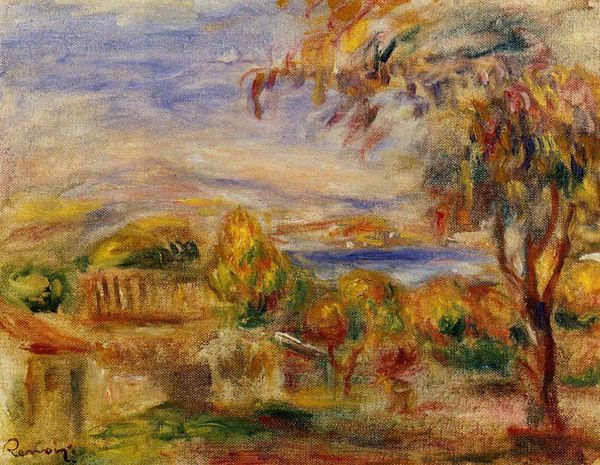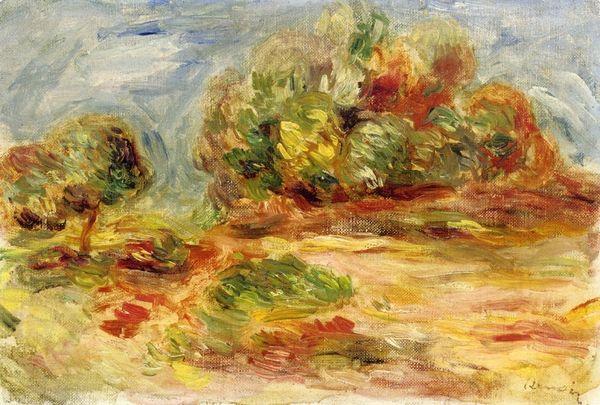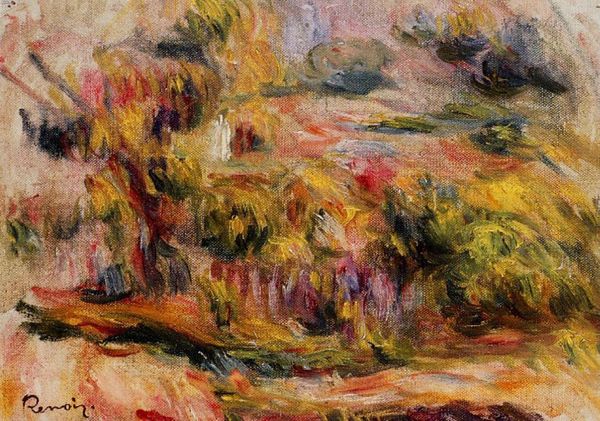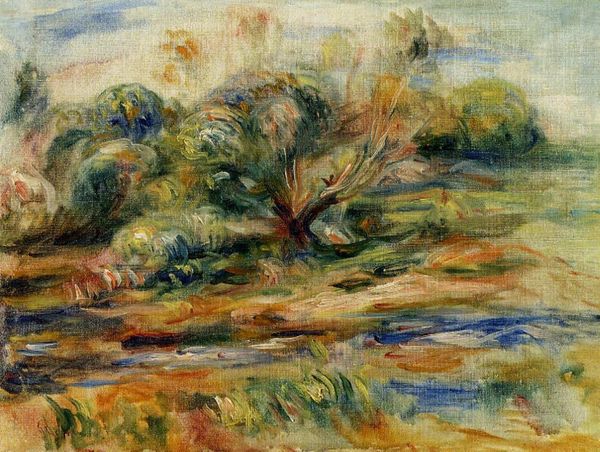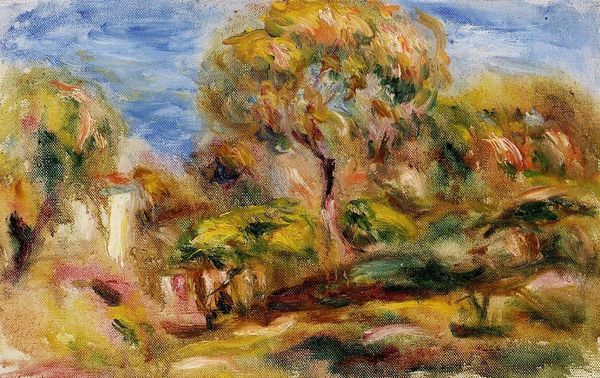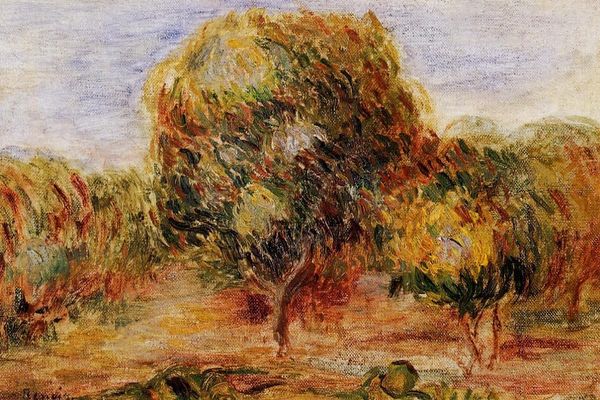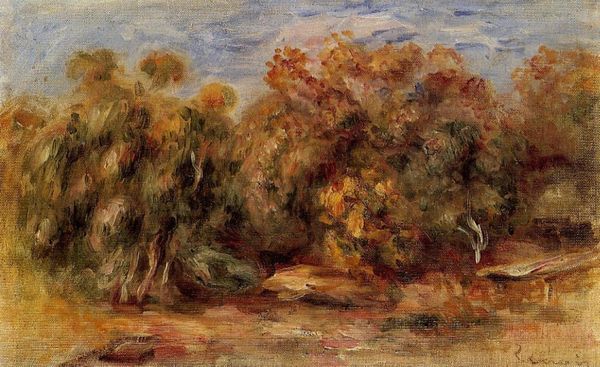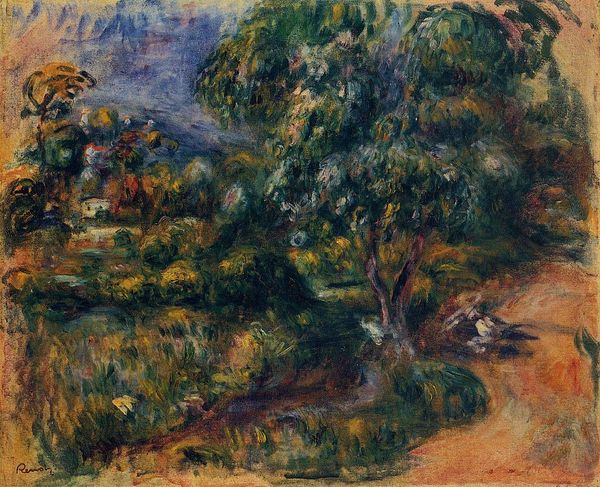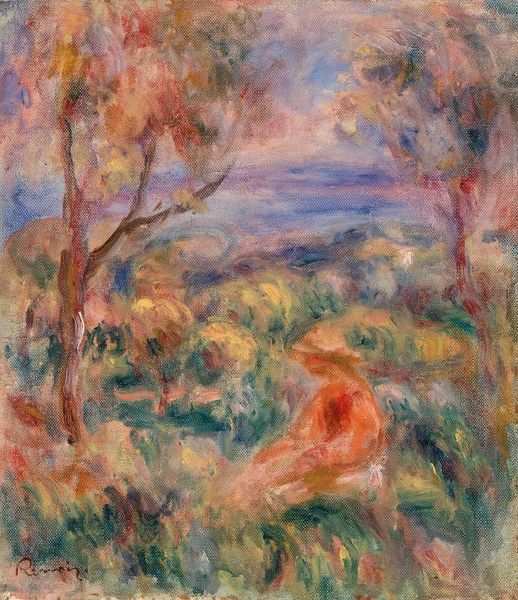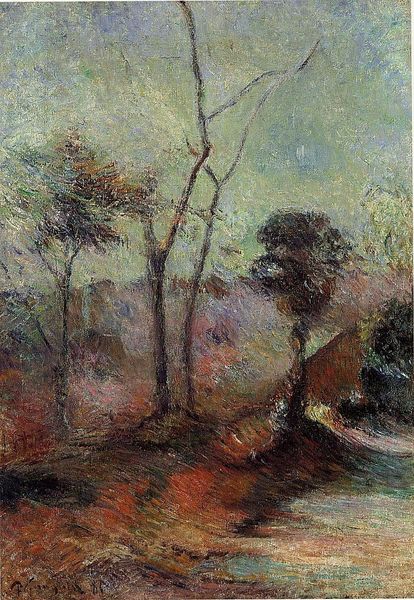
painting, plein-air, oil-paint
#
painting
#
impressionism
#
plein-air
#
oil-paint
#
landscape
#
impressionist landscape
#
oil painting
Copyright: Public domain
Editor: So this painting is simply called "Landscape," an oil on canvas, attributed to Renoir, but undated. It’s such a vibrant, almost chaotic scene! All that texture—I find myself wondering what story lies behind this specific place and its portrayal. What strikes you about it? Curator: For me, its value lies in how it exemplifies the shifting public perception of landscape painting during Renoir's time. This wasn't just about representing a scene; it became a canvas for exploring personal impressions and fleeting moments, impacting public role of art. Note how the indistinct architecture merges with the land, losing clarity as an idealised landscape; more the sense of place becomes one with the viewer. It reflects the burgeoning artistic freedom. Editor: So, in a way, Renoir isn't just painting what he sees, but how society allowed him to see, or rather, feel? Curator: Precisely. Impressionism was about challenging the established academic style which prescribed how a landscape should be rendered. The influence of art institutions like the Académie des Beaux-Arts started to wane in this new artistic climate that allowed subjective interpretations to be celebrated, reflecting socio-political shifts, questioning of institutions, and a broader public embracement of change. Editor: I'm starting to appreciate how "Landscape" can be more than just pretty trees and buildings; it's like a window into a changing world! Curator: Exactly! By looking at art through a historical lens, it illuminates not only the past but also its continued impact on how we view art today and the dynamics within our institutions. Editor: This gives me so much to think about. I guess there's always a deeper context than what meets the eye. Curator: Always, and asking about those contexts lets us have deeper discussions about both the past and how we can appreciate that work today.
Comments
No comments
Be the first to comment and join the conversation on the ultimate creative platform.
